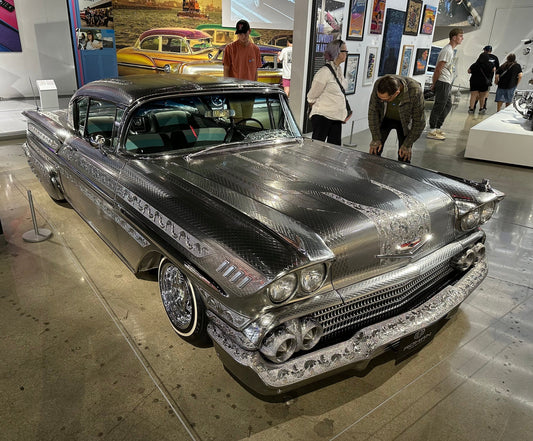A whole new ballgame
by Paul McGowan
Now that the Infinity IRS system is installed and I am listening to it I thought I might give you an update as to how things are going.
First I'll describe the audio chain being used. It's right now about as simple as it can be. For a source I am using either the PWT or the Bridge connected to our music library, feeding the PWD. The output of the PWD is connected through a 15 meter balanced interconnect from Audioquest that is breaking in nicely. The cable feeds directly into the PerfectWave Power Amplifier in balanced mode, that amp feeding the midrange tweeter panels. The IRS has its own subwoofer crossover box that feeds the signal to the big woofer towers. To this I have to neck down the balanced connection to single ended - as the entire system is single ended - they just weren't into balanced back then.
The whole system is perhaps 6 to 10dB more efficient than the Magneplanar system it replaced and so all my careful notes on the back of CD cases about volume have to be recalibrated. But that's ok, because I too have to be recalibrated.
The difference in sound between the original system and this new system is hard to describe - so big the differences. For one thing, the IRS has no apparent compression of dynamics. Because each of the 76 tweeters and 36 midrange drivers are all playing together, one can only imagine how little effort each of these drivers is asked to provide. Imagine for a moment a conventional pair of loudspeakers with but one tweeter and one midrange driver and what you're asking it to do - fill the room with sound - and of course you're pushing that driver in terms of dynamics. But now place 18 pair of loudspeakers in the room all playing the same thing, each 1/18th the loudness of the single pair, and they could theoretically play 18 times louder at the same level of strain as could a single pair - or put another way, there's 18 times less dynamic restriction than any conventional pair of loudspeakers.
What this results in is simply breathtaking levels of loudness delivered effortlessly - and I am not playing the system louder - what I mean is that there is simply no compression of anything and in most cases I had no idea of what was hidden in these recordings of mine.
I have a very special copy of a high resolution Nat King Cole track where the mastering engineer kept Nat front and center relative to the orchestra in back - he dominates the recording. On the older system the presentation was a bit "muddled together" where the singer and orchestra seemed to affect each other and were cut from one cloth - which might seem like a good thing until you hear them as separate and distinct from each other - Nat is just in the room with a clarity and presence that is uncanny. I really struggle to describe this - but once you hear the music without the dynamic compression all other conventional loudspeakers have - you'll understand what I mean.
Recordings I have relegated to my secondary and tertiary shelves have now been elevated up or have gone further down - most up in pecking order. It's just crazy but my task right now is to spend a few weeks getting to know my library again in a whole new way. And, oh yes, high resolution discs? Holy maloley - the differences between standard CD's and high resolution versions were always apparent and appreciated but now - it's a whole new ballgame.
And to think - I am still not able to even set the turntable up because my shelving is being delivered later this week.
- Choosing a selection results in a full page refresh.
- Opens in a new window.









